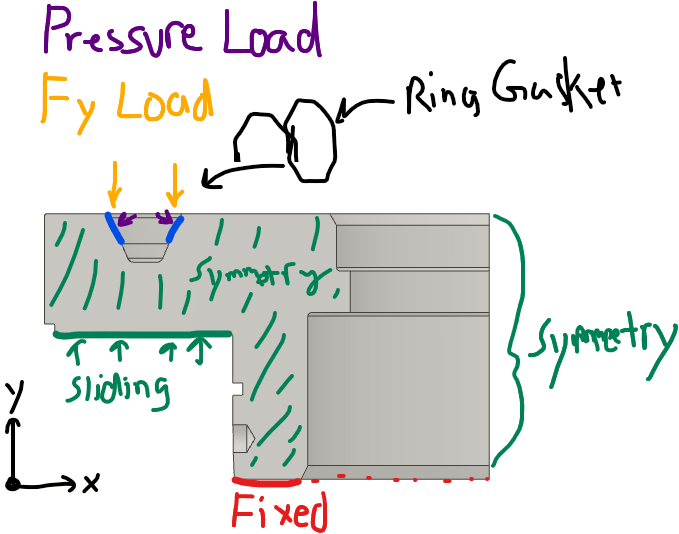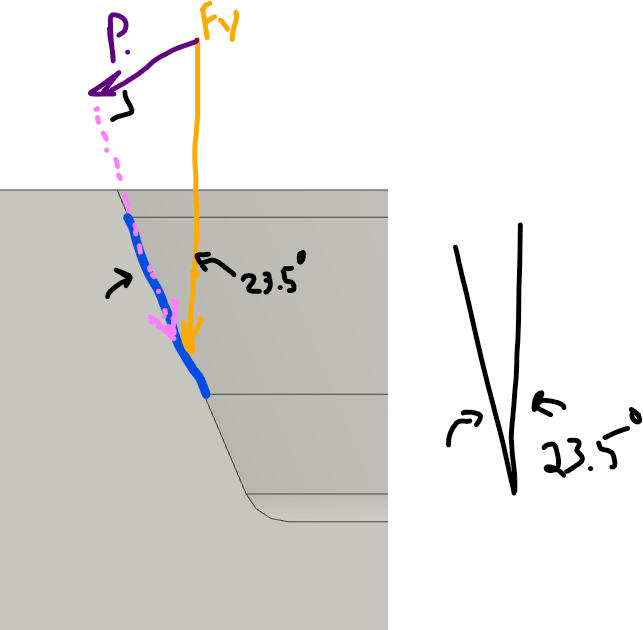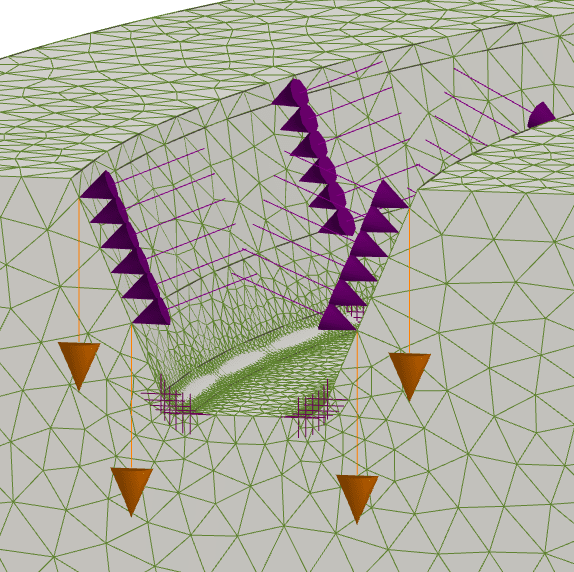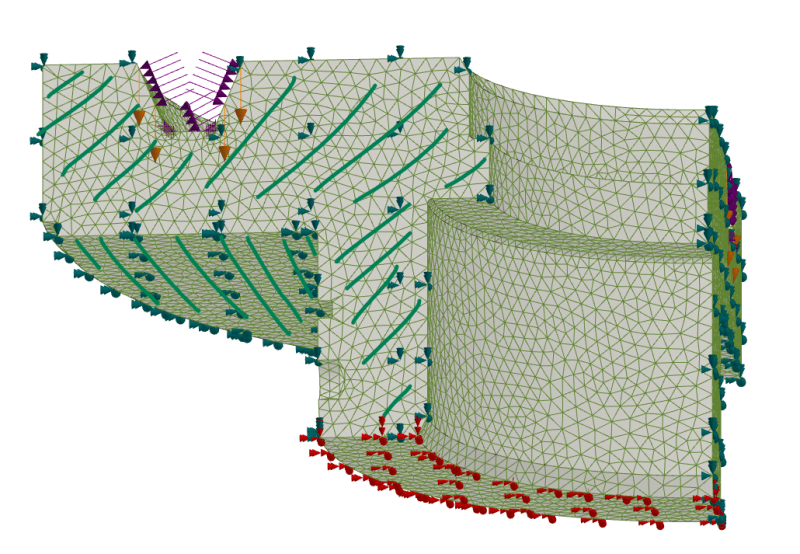bryansonnier
Mechanical
So i'm trying to model the effect of the RTJ Ring on the RTJ groove. I'm using 100% torque value x 2(for safety) x 8 (number of bolts) = force of ring into joint. I modeled the force down onto the 23.5deg angled surface where the ring was hitting and got a stress. Then I thought the program might be modeling the surface of the part being pulled directly inline with the force. I know the force is going to have 2 components, the Normal Force and the Parallel force. I added the normal force as a pressure over the area of effect to mimic a completely normal force. I have not put the parallel force as i think it would pull the surface with a component that would reduce the normal force.
My question is am i overestimating the effect of the ring on the groove by using both the original force and the normal force. Thinking about it i'd say yes i am but i'm kind of at a loss as to a better way to model that. any help would be appreciated.
My question is am i overestimating the effect of the ring on the groove by using both the original force and the normal force. Thinking about it i'd say yes i am but i'm kind of at a loss as to a better way to model that. any help would be appreciated.




